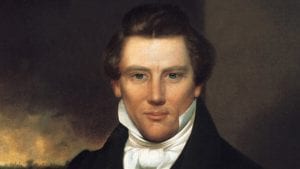 Few aspects of Joseph Smith’s life have been scrutinized more in recent years than his personal practice of polygamy.
Few aspects of Joseph Smith’s life have been scrutinized more in recent years than his personal practice of polygamy.
Some readers’ first exposure to Joseph Smith’s practice of polygamy comes from reading sensational headlines. Exaggerations and assumptions fill internet discussions, podcasts, and newspaper articles, so it is hard to know where to go for accurate information.
The temptation by some authors to fill in historical gaps often results in distortions that stir up emotions and create tantalizing soundbites that, even if largely fictional, may generate unnecessary fear and confusion.
Polygamy is part of the collective Mormon past that many struggle to understand. Current members have no cultural or religious basis to situate plural marriage. Members in pioneer Nauvoo shared that same struggle. When Benjamin Johnson first heard of it, he recalled: “If a thunderbolt had fallen at my feet I could hardly have been more shocked or amazed.”
Early Mormon polygamy is a historical puzzle that can at best be awkwardly reconstructed from fragmentary recollections. But it is apparent from reminiscences that those who practiced it were convinced it represented a religious practice instituted by God.
Church Historian Matt Grow noted that the more complicated the history, the more nuanced conclusions should be. Mormon polygamy was undoubtedly complicated, warranting provisional conclusions.
In this interview, Daniel C. Peterson of the Interpreter Foundation interviews Brian and Laura Hales about the most common questions asked about Joseph Smith’s practice of polygamy.
Join us for this candid discussion about what can and cannot be known about Joseph Smith’s practice of polygamy.
This episode is a joint production of LDS Perspectives and the Interpreter Foundation.
Access a transcript of “Tough Questions about Polygamy” at the LDS Perspectives website.
The post Podcast: Tough Questions about Mormon Polygamy with Brian and Laura Hales (Ft. Dan Peterson) appeared first on FairMormon.
Continue reading at the original source →



